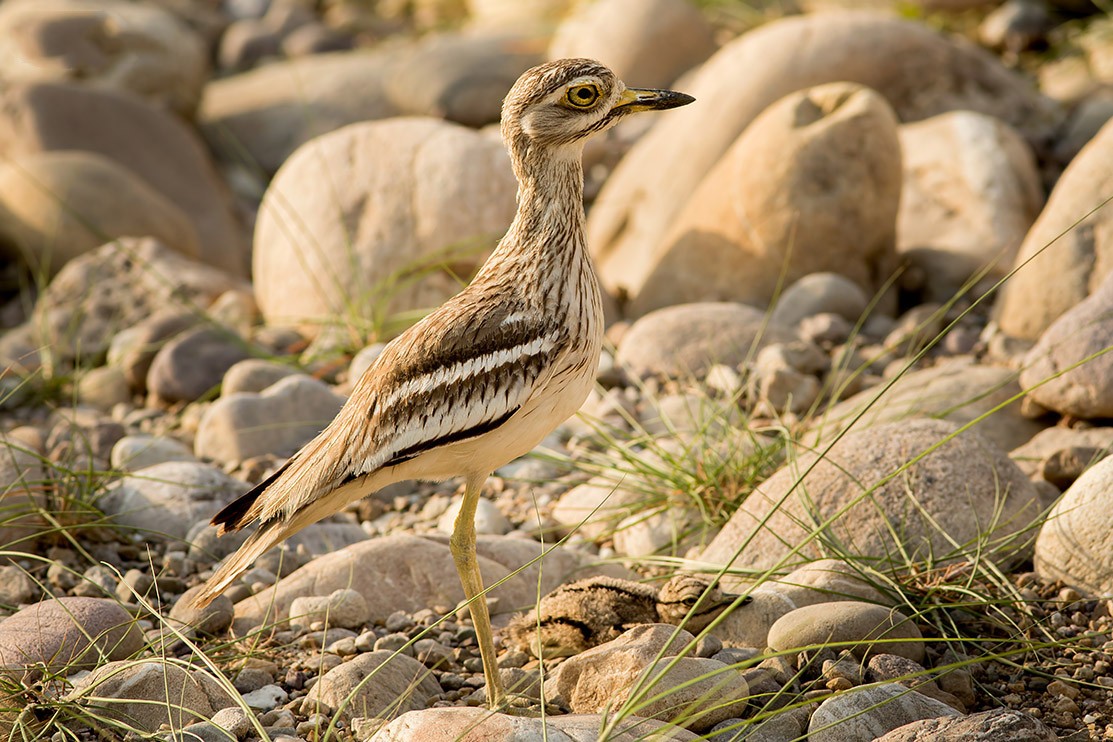Indian Stone-curlew
A species of Typical Thick-knees Scientific name : Burhinus indicus Genus : Typical Thick-knees
Indian Stone-curlew, A species of Typical Thick-knees
Botanical name: Burhinus indicus
Genus: Typical Thick-knees
Content
Description General Info
 Photo By CLpramod , used under CC-BY-SA-4.0 /Cropped and compressed from original
Photo By CLpramod , used under CC-BY-SA-4.0 /Cropped and compressed from original Description
This stocky and brown ground bird with large eyes is about 41 centimeters in length. It has dark streaks on a sandy brown ground colour and is plover-like. The large head has a dark stripe bordering a creamy moustachial stripe below the eye. There is also a narrow creamy supercilium. The legs are stout and the knees are thick, giving them the group of name of "thick-knee". They have large yellow eyes. The sexes are alike and the immature is paler than adult with more marked buff and streaks on the underparts. In flight, they have two prominent white and a white patch on the darker primaries and at rest a broad pale band is visible on the wing. The Indian stone curlew is active mainly at dawn and dusk and it calls mainly at night. The call is a series of sharp whistling notes pick-pick-pick-pick ending sometimes like pick-wick, pick-wick. They are found in small groups and during the day, they are found standing still under the shade of bush. 
Nest Placement
Ground
Feeding Habits
Indian Stone-curlew predominantly eats insects, worms, small reptiles, and occasionally seeds. Indian Stone-curlew forages primarily on the ground, using a keen sense of sight to spot prey. Unique adaptations include a preference for nocturnal feeding, which reduces competition with diurnal species.
Habitat
Indian Stone-curlew typically inhabits sparsely vegetated landscapes, including dry deciduous and thorn forests, dry savannas, semi-desert areas, and low-intensity agricultural regions. These birds are also found in stony, dry riverbeds with scrub, groves, and sometimes gardens. They prefer lowlands and foothills up to elevations of 1000 meters, with occasional sightings at 1310 meters in elevated terrains.
Dite type
Omnivorous
General Info
Feeding Habits
Bird food type
Distribution Area
This species is restricted to Bangladesh, Bhutan, Cambodia, India, Laos, Myanmar, Nepal, Pakistan, Sri Lanka, Thailand and Viet Nam, where it occurs in thin dry deciduous forest, scrub, stony hillsides and fallow lands. 
Species Status
Not globally threatened.
Scientific Classification
Phylum
Chordates Class
Birds Order
Shorebirds Family
Stone-curlews Genus
Typical Thick-knees Species
Indian Stone-curlew